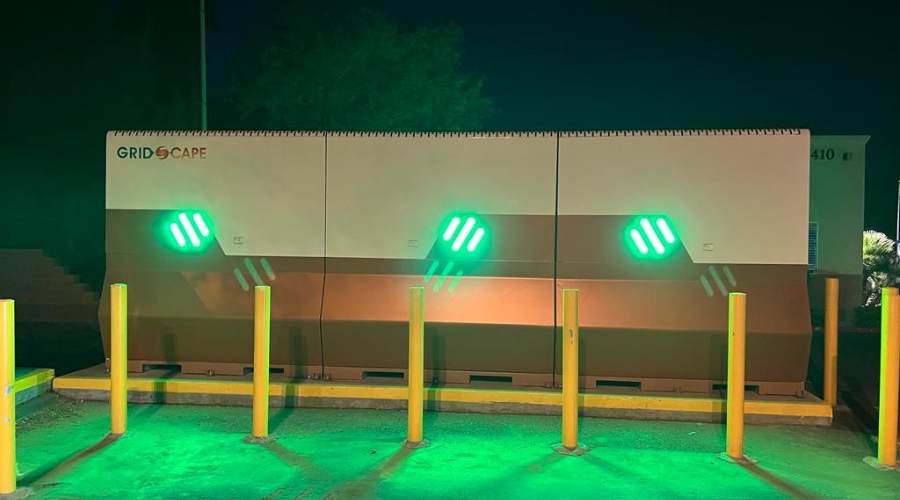The psychology of power: how Microgrids are changing our relationship with energy

Our relationship with energy has traditionally been passive. For most of us, energy is something we consume but rarely think about, until it’s not there. Our awareness of the electricity that powers our lives only surfaces in moments of disruption, like a blackout, or when we notice a spike in our utility bill. But as microgrids gain momentum, this passive relationship with energy is evolving. Microgrids are reshaping how we perceive, value, and interact with energy, creating a shift in mindset and fostering a deeper, more active connection with the resources that power our lives.
In this article, we’ll explore the psychological shift that occurs when communities and individuals have greater control over their energy through microgrids. From fostering a sense of empowerment to creating community bonds and promoting sustainable habits, microgrids are not just technological solutions; they’re catalysts for changing our mindset about energy itself.
1. From passive consumption to active participation
For decades, energy consumption has been an “out of sight, out of mind” practice. We plug in devices, turn on lights, and drive electric cars without much thought about where the energy comes from or the environmental costs involved. Centralized utility companies have historically managed the generation and distribution of electricity, with little input from the people consuming it.
Microgrids change this by decentralizing energy production, placing the power (literally and figuratively) in the hands of communities. By generating electricity locally, microgrids encourage individuals to become active participants in their energy usage. With this local approach, community members are more aware of the sources of their energy, whether it’s solar, wind, or battery storage and are thus more likely to think about how and when they use it. This heightened awareness can lead to mindful consumption, where people consider not only their immediate needs but also the broader implications of their energy use.
2. Energy independence: a new source of empowerment
There’s a profound sense of empowerment that comes with energy independence. For communities served by microgrids, the ability to generate and control their own power fosters a sense of autonomy. When energy is managed locally, it isn’t just about lights staying on; it’s about having the ability to prioritize energy needs, to choose renewable sources, and to create a resilient safety net that doesn’t rely entirely on external forces. This independence is particularly empowering for communities that have historically been underserved or vulnerable to frequent power outages.
Microgrids allow these communities to not only maintain consistent energy access but also to contribute to a cleaner, more resilient energy grid. The sense of agency that comes with this autonomy is powerful, changing the way people perceive their role within the energy system. They shift from passive recipients of electricity to active contributors to a self-sustaining energy ecosystem, which can instill a sense of pride and responsibility in the energy they produce and consume.
3. Shaping sustainable habits through real-time feedback
Microgrids often come with advanced monitoring and data systems that provide real-time feedback on energy consumption. This immediate feedback loop has a profound psychological impact on energy use behavior. Studies have shown that when people receive instant information about their consumption, whether it’s energy, water, or fuel, they tend to adjust their behaviors to use less.
Through a microgrid’s monitoring system, individuals and communities can see exactly how much energy they’re consuming at any given moment, and where that energy is coming from. This visibility encourages more sustainable habits, as people begin to make connections between their actions and the impact on energy resources.
4. Creating collective responsibility and community bonds
Microgrids foster a unique sense of collective responsibility by encouraging communities to share and manage a common energy resource. This shared energy source prompts people to think beyond individual needs and prioritize essential services, especially during high demand. Microgrids also enable group decision-making, allowing communities to decide together on renewable investments or energy-saving measures. This collaborative approach builds mutual respect and empowers residents to advocate for sustainability and resilience within their own neighborhoods.
5. Redefining ”value” in energy
Traditional energy pricing structures are based on quantity consumed, with little consideration for the quality or source of that energy. Microgrids introduce a new layer of value by highlighting the importance of local, renewable, and resilient energy sources. When communities have control over their energy production, they can assign value to the type of energy they prioritize, often opting for cleaner, sustainable options. This shift redefines the concept of “value” in energy, as people start to see energy not just as a commodity, but as a shared, sustainable resource.
This change in value perception can also impact the willingness to invest in infrastructure improvements or pay a premium for greener energy options. When people understand that their energy dollars go toward local renewable generation or increased community resilience, they’re often more willing to support these initiatives, recognizing the long-term benefits over short-term savings.
6. Building resilience in both infrastructure and mindset
Beyond the physical resilience that microgrids provide, they also foster a psychological resilience among their users. Knowing that their community has a reliable, self-sustained source of power during emergencies offers peace of mind and a sense of preparedness. This security allows people to feel more in control of their environment, even in the face of external disruptions like extreme weather or power outages.
As communities continue to face challenges from climate change and increasing energy demands, this mindset shift toward resilience and self-sufficiency becomes invaluable. It’s not just about preparing infrastructure; it’s about building a resilient mindset within communities, one that can adapt, respond, and thrive under changing conditions.
7. Microgrids as a model for the future of energy
Ultimately, microgrids offer a glimpse into a future where energy is no longer a distant, invisible utility managed by central authorities, but a tangible, local resource that communities take pride in managing. The psychological shift they inspire from passive consumption to active engagement signals a broader evolution in how we relate to and think about energy.
This shift is crucial as we move toward an era where renewable energy, climate adaptation, and resilience are priorities. Microgrids are more than technology; they’re a framework for a new kind of relationship with energy one that empowers individuals, builds community, and redefines what it means to be responsible, engaged energy consumers.
In a world facing increasing environmental and energy challenges, microgrids are not only changing how power is distributed; they’re changing how we think about power itself.






